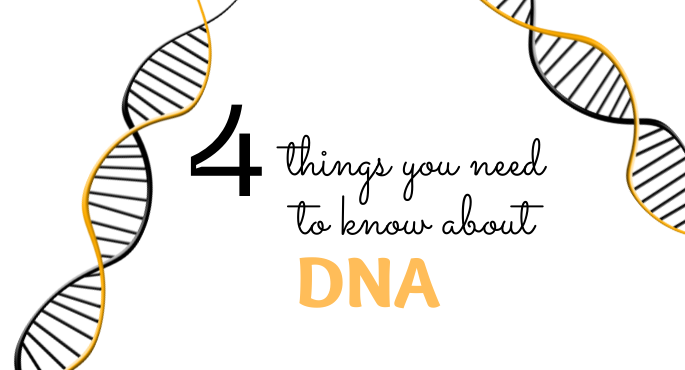What is DNA?
DNA is a blueprint of a human body and it is present in the human cells which carry the genetic instructions used for growth, functioning and reproduction of living organisms.
- DNA is carried by a long, double-stranded molecule that looks like a twisted ladder. This is like a program that directs the formation, growth, maintenance, and reproduction of the trillions of cells that make up your body.
- DNA contains your hereditary information such as your eye color, skin color, the shape of your nose, and so on. It also contains the genes and the instructions for building a unique human body. Each cell has a complete set of instructions.
What is the Importance of DNA?
The code within our DNA provides directions on how to make proteins that are vital for our growth, development, and overall health. The DNA code is prone to damage and it is estimated that tens of thousands of get damaged every day. The damage can occur due to errors in DNA replication, free radicals, and exposure to UV radiation.
The cells have specialized proteins that are able to detect and repair the damaged DNA. But if the protein in the DNA does not work properly it could lead to various diseases. There are five major ways for DNA repair.
Some examples of diseases that occur due to mutations in a single gene include cystic fibrosis and sickle cell anemia. Mutations can also lead to the development of cancer. For example, if genes coding for proteins involved in cellular growth are mutated, cells may grow and divide out of control. Some cancer-causing mutations can be inherited while others can be acquired through exposure to carcinogens like UV radiation, chemicals, or cigarette smoke.
What is DNA made of?
The DNA molecule is made up of nucleotides. Each nucleotide contains three different components — a sugar, a phosphate group, and a nitrogen base.
The sugar in DNA is called 2’-deoxyribose. These sugar molecules alternate with the phosphate groups, making up the “backbone” of the DNA strand.
Each sugar in a nucleotide has a nitrogen base attached to it. There are four different types of nitrogen bases found in DNA and they include:
- adenine (A)
- cytosine (C)
- guanine (G)
- thymine (T)
What do you need to know about DNA?
- DNA is packaged within the chromosomes in such a way that it has been called a “feat of engineering.”
- The capacity to store information in DNA is better than a Modern age computer.
- DNA contains all the instructions needed to build a unique human body and maintain it throughout a lifetime.
- For DNA to work, it has to be copied, read, and proofread by a group of enzymes, which work together with precision.
The appropriate section of DNA is called a gene. Every cell in the human body is packed with many components that are vital for life and one of these components is the gene. All of us have about 35,000 genes that determine hair colour and texture, skin and eye colour, height and other features of our physical appearance. Our genes also play an important role to determine the quality of our internal organs. Not all diseases are caused by a single gene and by studying an individual’s gene structure, scientists hope to detect and treat illness even before the patient experiences any symptoms.
When genes are damaged, it can have an impact on our health. Some researchers believe that all diseases arise from genetic malfunction but that is not true, because some defective genes are inherited from our parents and others are damaged by exposure to harmful elements in our environment.
The study of the gene structure is known as genomics. Genomics may also reveal why a certain drug proves effective for some patients and not for others. Genomics also help us to understand why certain individuals are more prone to cancers than others or why a type of cancer is more aggressive in some people than in others. The specific genetic information will give the doctors the ability to prescribe the medicine and the dosage needed in your particular case.
Follow our blog for more health related articles.

